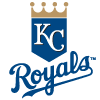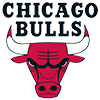Carlos Santana, Mike Napoli and Brian McCann are all very solid fantasy producers, but each has a hole: neither provides much in the stolen bases category, and neither is particularly likely to hit for a great batting average. Despite these holes in their fantasy game, all three were in the top 50 in the final Mock Draft Central average draft position rankings. Why? Because catchers, as a general rule, just don't hit. They catch, and if they hit their teams consider it gravy. But a look at the data suggests a change may be on the horizon.
Although OPS isn't the most widely used offensive statistic, particularly for fantasy purposes, it's usefulness as an all-encompassing hitting statistic is well accepted. OPS+ takes this statistic and adjusts it for the season and park the player is competing against. 100 is average, higher is better, lower is worse. Observe, overall catcher OPS+ by year since 2002:
2002: 87
2003: 91
2004: 91
2005: 88
2006: 94
2007: 88
2008: 91
2009: 91
2010: 93
2011: 95
2012: 110
Obviously, it's still very early in the season, and there are still a few statistical anomalies at play here. The Brewers' duo of Jonathan Lucroy and George Kottaras won't maintain a .574 slugging percentage; A.J. Pierzynski probably won't hit .340/.382/.640 the whole season. Still, between all the catchers league-wide we have a sample of over 2,000 plate appearances and catchers are hitting better than the league average. Typically, a league-average hitting catcher is
Carlos Santana, Mike Napoli and Brian McCann are all very solid fantasy producers, but each has a hole: neither provides much in the stolen bases category, and neither is particularly likely to hit for a great batting average. Despite these holes in their fantasy game, all three were in the top 50 in the final Mock Draft Central average draft position rankings. Why? Because catchers, as a general rule, just don't hit. They catch, and if they hit their teams consider it gravy. But a look at the data suggests a change may be on the horizon.
Although OPS isn't the most widely used offensive statistic, particularly for fantasy purposes, it's usefulness as an all-encompassing hitting statistic is well accepted. OPS+ takes this statistic and adjusts it for the season and park the player is competing against. 100 is average, higher is better, lower is worse. Observe, overall catcher OPS+ by year since 2002:
2002: 87
2003: 91
2004: 91
2005: 88
2006: 94
2007: 88
2008: 91
2009: 91
2010: 93
2011: 95
2012: 110
Obviously, it's still very early in the season, and there are still a few statistical anomalies at play here. The Brewers' duo of Jonathan Lucroy and George Kottaras won't maintain a .574 slugging percentage; A.J. Pierzynski probably won't hit .340/.382/.640 the whole season. Still, between all the catchers league-wide we have a sample of over 2,000 plate appearances and catchers are hitting better than the league average. Typically, a league-average hitting catcher is hailed around the league as one of its best hitters. Are we coming upon a time when that is no longer the case? Let's examine the talent currently headlining the position.
The return of Joe Mauer to relevance this year has revitalized the top of the catcher position, and a look at the top five on our cheat sheet reveals five catchers clearly deserving of the elite label. Along with Mauer, we have Carlos Santana, Mike Napoli, Brian McCann and Buster Posey. The latter four all have three home runs already just over 10 percent of the way into the season; Mauer is back to hitting over .300.
But this is nothing new – there are typically anywhere from three to six elite hitting catchers in any given year. Santana, Napoli and McCann all qualified as such last season, as did Alex Avila, Yadier Molina and Miguel Montero, putting up OPS+ marks of 120 or better. Instead, what makes this year's class stand out, at least so far, is its remarkable depth.
Last season, Avila was second among catchers with a 142 OPS+. So far this season, eight catchers – Posey, Matt Wieters, Pierzynski, Josh Thole, Molina, Napoli, Santana, and A.J. Ellis – have equaled or bettered that mark through at least 40 plate appearances. Lucroy is just one behind it; Mauer, Chris Iannetta and Avila are all above the 120 threshold for elite set above.
Now, there are a few players on this list who will almost certainly fall back to the pack as the season goes on – Pierzynski, Thole and Ellis in particular stand out. There are those who will continue to excel but must inevitably cool off somewhat – Buster Posey won't finish with a .373 average; Mike Napoli probably won't hit 40 home runs (although I wouldn't put it completely past him).
At the same time, several quality bats have yet to heat up. Brian McCann's current .317 OBP would be a career low. Nick Hundley, Russell Martin, Geovany Soto, J.P. Arencibia, Kurt Suzuki and Miguel Olivo are all hitting at or under .200. Miguel Montero has yet to hit a double. Wilson Ramos has scuffled as well after breaking out to the tune of .267/.334/.445 last season with Washington.
Still, in the aggregate, the catcher position has been incredibly productive this season. It's been so productive, in fact, that only center field (thanks, Matt Kemp!), designated hitter and first base can claim a higher OPS than catcher thus far through 2012, with a significant 13-point gap separating catcher from fifth-place right field.
This is not at all what is supposed to happen. Bill James developed the concept of the "defensive spectrum" back in one of his seminal Baseball Abstract books, and it has carried on to this day. The spectrum rates the defensive positions from hardest to easiest as you move from left to right:
[C | SS | | 2B | CF | 3B | | RF | LF | | 1B | | DH]|
Typically over the course of a career a player will move from left to right on the defensive spectrum – we saw players like Alex Rodriguez and Cal Ripken make moves from shortstop to third base; outfielders commonly are forced from center field into a corner position when their legs betray them (see Torii Hunter). Since teams are constantly dealing with the issue of optimizing their position players for both offense and defense, the better hitters tend to clump on the right side of the spectrum – Adam Dunn and David Ortiz largely have jobs because the DH position exists. First base is just easy enough for Prince Fielder to play and still provide incredible value with his bat.
But there are years which throw this defensive spectrum a bit out of whack – good players retire or decline, All-Stars are promoted at one position and not others. This year appears as if it could be one of those at catcher. The returns from injury of Posey and Mauer revitalize the top of the position, and youngsters like Santana, Wieters and Jesus Montero bring power not usually seen from backstops. Steady players like McCann and Yadier Molina provide value as well. This simply just isn't a position that usually can boast as many productive players as it will in 2012.
What does that mean for fantasy owners? If you're in a two-catcher league, it shouldn't be terribly difficult to find a useful second piece. In one-catcher leagues a trade of a top-tier catcher like a Santana or a Napoli may be advisable simply because of how many quality catchers remain below him. Mauer had so much value at his peak not just because of his skill, but because below the top five, many catchers were an anchor to their fantasy teams.
Of course, it's early, and early statistical trends can disappear into thin air with another three weeks of games. But this phenomenon would be one to keep an eye on – if the catcher position is truly as talented as it appears to be at first glance, it changes the entire landscape of the game, both of real and fantasy baseball.







































